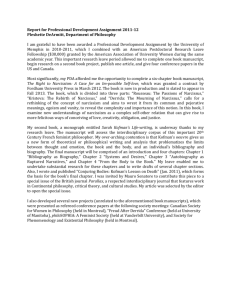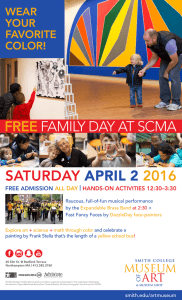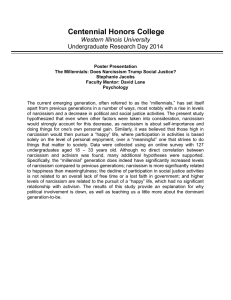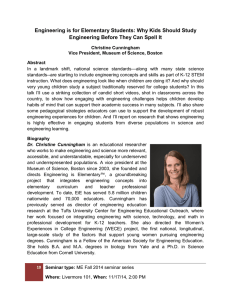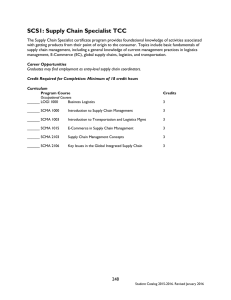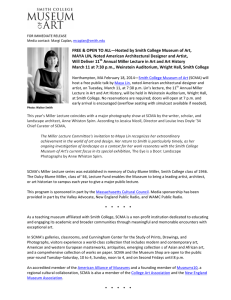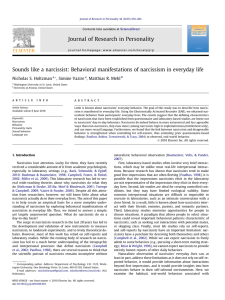Document 12884882
advertisement
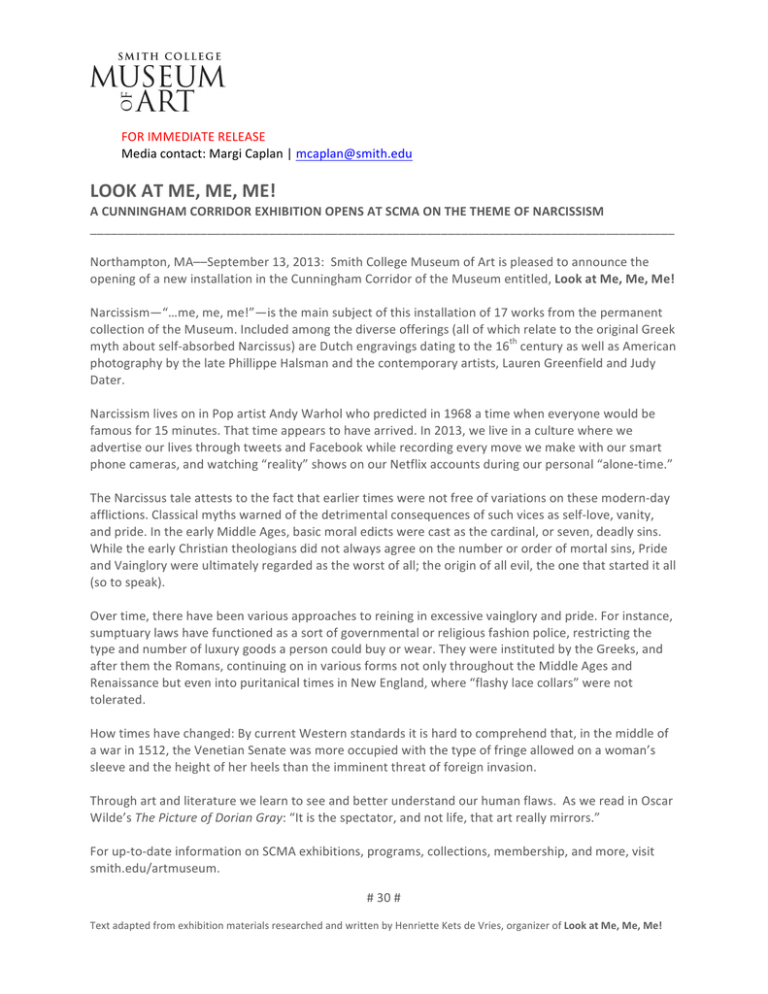
FOR IMMEDIATE RELEASE Media contact: Margi Caplan | mcaplan@smith.edu LOOK AT ME, ME, ME! A CUNNINGHAM CORRIDOR EXHIBITION OPENS AT SCMA ON THE THEME OF NARCISSISM _____________________________________________________________________________________ Northampton, MA––September 13, 2013: Smith College Museum of Art is pleased to announce the opening of a new installation in the Cunningham Corridor of the Museum entitled, Look at Me, Me, Me! Narcissism—“…me, me, me!”—is the main subject of this installation of 17 works from the permanent collection of the Museum. Included among the diverse offerings (all of which relate to the original Greek myth about self-­‐absorbed Narcissus) are Dutch engravings dating to the 16th century as well as American photography by the late Phillippe Halsman and the contemporary artists, Lauren Greenfield and Judy Dater. Narcissism lives on in Pop artist Andy Warhol who predicted in 1968 a time when everyone would be famous for 15 minutes. That time appears to have arrived. In 2013, we live in a culture where we advertise our lives through tweets and Facebook while recording every move we make with our smart phone cameras, and watching “reality” shows on our Netflix accounts during our personal “alone-­‐time.” The Narcissus tale attests to the fact that earlier times were not free of variations on these modern-­‐day afflictions. Classical myths warned of the detrimental consequences of such vices as self-­‐love, vanity, and pride. In the early Middle Ages, basic moral edicts were cast as the cardinal, or seven, deadly sins. While the early Christian theologians did not always agree on the number or order of mortal sins, Pride and Vainglory were ultimately regarded as the worst of all; the origin of all evil, the one that started it all (so to speak). Over time, there have been various approaches to reining in excessive vainglory and pride. For instance, sumptuary laws have functioned as a sort of governmental or religious fashion police, restricting the type and number of luxury goods a person could buy or wear. They were instituted by the Greeks, and after them the Romans, continuing on in various forms not only throughout the Middle Ages and Renaissance but even into puritanical times in New England, where “flashy lace collars” were not tolerated. How times have changed: By current Western standards it is hard to comprehend that, in the middle of a war in 1512, the Venetian Senate was more occupied with the type of fringe allowed on a woman’s sleeve and the height of her heels than the imminent threat of foreign invasion. Through art and literature we learn to see and better understand our human flaws. As we read in Oscar Wilde’s The Picture of Dorian Gray: “It is the spectator, and not life, that art really mirrors.” For up-­‐to-­‐date information on SCMA exhibitions, programs, collections, membership, and more, visit smith.edu/artmuseum. # 30 # Text adapted from exhibition materials researched and written by Henriette Kets de Vries, organizer of Look at Me, Me, Me!
